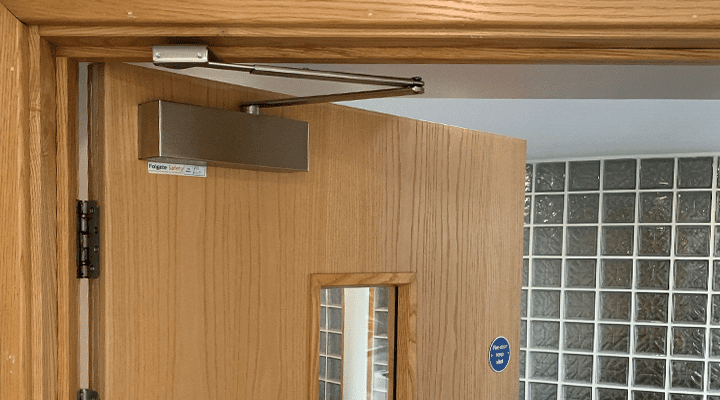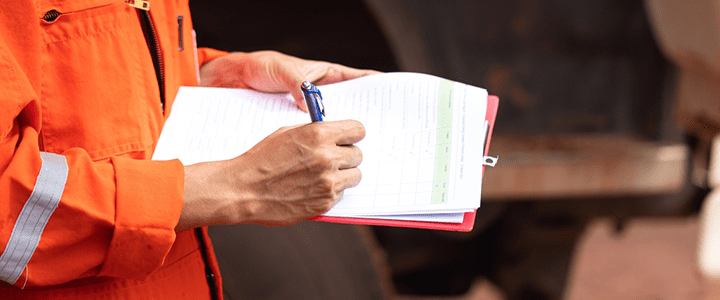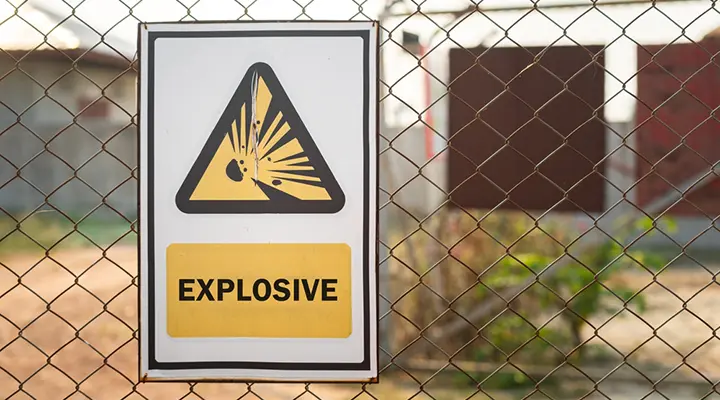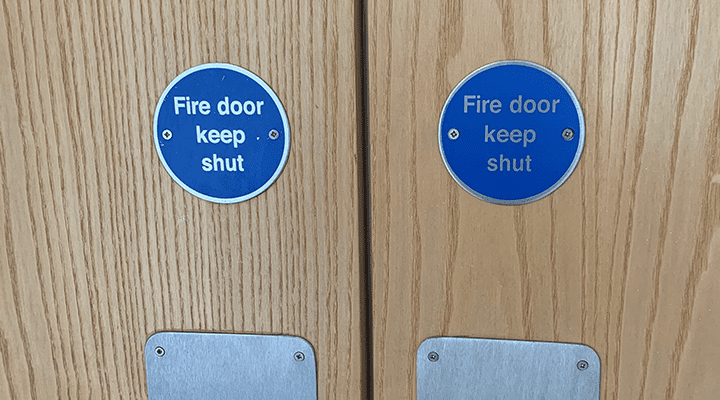This article explains the fire safety Legislation across the UK and outlines recent changes in fire safety regulations in England. The article also provides a minimum requirement list of fire door inspection checks and explains the additional requirements the legislation puts on the responsible person relating to fire doors.
Why are fire doors important
Fire doors are an integral part of fire safety. When they are installed and used correctly, they stop the spread of smoke, heat and flames in a building. This gives people time to evacuate a building safely. It also allows fire services to extinguish a fire before it spreads to other parts of a building.
However, it is evident that damaged or ineffective fire doors can lead to disastrous consequences. Following the Grenfell Tower fire, which killed 72 people on the night of 14 June 2017, the government established the Independent Grenfell Tower Inquiry in August 2017. The Phase 1 report reveals that, during the fire, multiple fire doors in the building failed to perform their essential function because they lacked effective self-closing devices. Some of the devices were broken, others had been disabled or removed. This led to ineffective fire doors allowing smoke and toxic gases to spread through the building.
The report makes several recommendations and requires a change in the law. The Fire Safety (England) Regulations 2022, which came into force on 23 January 2023, implements most of these recommendations. Fire Safety Legislation varies across the UK.
i2Comply offers a CPD-Certified Fire Safety England Regulations 2022 online course which covers these new important regulations and makes sure building owners, building managers, maintenance staff are compliant.

Fire Safety Legislation – England and Wales
There are 3 pieces of Fire Safety legislation in England that supplement each other and set out duties in relation to fire door safety in a building.
The responsibility for keeping people safe from fire lies with the responsible person. The responsible person must take reasonable steps to reduce the risks of fire and ensure that people who work or visit the premises can escape safely if a fire occurs. They have a responsibility to ensure that fire doors in a building are correctly fitted, regularly inspected and maintained. Also, they must provide staff with information and fire safety training.
The Regulatory Reform (Fire Safety) Order 2005
The Regulatory Reform (Fire Safety) Order 2005, that covers general fire safety in England and Wales, originally apply in all workplaces and commercial buildings, and non-domestic (shared) areas of multi-occupied residential buildings such as hallways, staircases and landings.
Fire Safety Act 2021
Fire Safety Act 2021 was introduced following the completion of Phase 1 of the Grenfell Tower Inquiry. It clarifies the scope of The Regulatory Reform (Fire Safety) Order 2005. It makes clear that The Fire Safety Order also applies to individual flat entrance doors between domestic premises and the communal parts of a multi-occupied residential building.
The Fire Safety (England) Regulations 2022
The Fire Safety (England) Regulations 2022 extend duties imposed by The Fire Safety Order. Regulation 10 of the Fire Safety (England) Regulations 2022 requires that in all multi-occupied residential buildings comprising of two or more dwellings, the responsible person:
- Put in place general fire precautions. This includes all fire doors, including flat entrance doors, that must provide adequate protection.
- Provide residents with information that explains the importance of keeping fire doors shut when they are not in use. Why they must not tamper with doors and self-closing devices. How they should report any faults or damage to doors immediately to the responsible person. Residents must also receive the information about fire doors as soon as reasonably practicable after they move into a multi-occupied residential building and then on an annual basis.
Additional duties apply in buildings containing two or more sets of domestic premises in which the top storey is more than 11m above ground level (typically, a building of more than four storeys). In such residential buildings, the responsible person must additionally:
- Use best endeavours to check all flat entrance fire doors at least every 12 months.
- Carry out checks of any fire doors in communal areas at least every 3 months.
Section 156 of the Building Safety Act 2022
Section 156 of the Building Safety Act 2022 came into effect in October 2023. The legislation makes amendments to the Regulatory Reform (Fire Safety) Order 2005.
Section 156 of the Building Safety Act 2022 applies to all non-residential buildings (such as workplaces) and the non-residential parts of multi-occupied domestic buildings (such as communal corridors and stairways). The legislation does not apply within individual domestic premises.
For information about the main legislation changes that businesses need to be aware of, take a look at our article New Fire Safety Regulations – 1st Oct 2023.
Fire Safety Legislation – Scotland
Part 3 of the Fire (Scotland) Act 2005, supported by the Fire Safety (Scotland) Regulations 2006 covers fire safety in Scotland.
The duty holder must ensure, so far as is reasonably practicable, the safety of the employees in respect of harm caused by fire in premises. They have a legal duty to carry out a fire risk assessment of the premises and then take steps to remove or reduce that risk. Also, the duty holder must ensure that any fire prevention assets, including fire doors are in efficient working order and in good repair.
Unlike England and Wales, the Scottish Government did not introduce new legislation following Phase 1 of the Grenfell Inquiry – but this remains under active consideration. A key reason for not amending existing legislation is that, following the fatal Garnock Court tower block fire in 1999, Scotland improved its fire safety regulations in 2005 – making it mandatory for builders to ensure that any external cladding ‘inhibited’ fire spreading.
Fire Safety Legislation – Northern Ireland
The Fire and Rescue Services (Northern Ireland) Order 2006 and the Fire Safety Regulations (Northern Ireland) 2010 cover fire safety in Northern Ireland.
The person responsible for fire safety in Northern Ireland is known as the appropriate person. They have a duty to carry out the fire risk assessment and ensure the safety of anyone using their premises. They must ensure that fire doors in a building are correctly fitted, regularly inspected and maintained.
Unlike England and Wales, the Northern Ireland Government did not introduce new legislation following Phase 1 of the Grenfell Inquiry. However, this remains under active consideration.
Fire door checks

Fire door checks under The Fire Safety (England) Regulations 2022, Regulation 10 are simple and do not require any specialist skills. The Responsible Person, or their staff, should be able to carry out these checks after receiving simple instructions.
If any issues are identified from these checks, the Responsible Person will need to ensure that the necessary arrangements are in place to address those issues. If there is a need for repair or replacement of a fire door, this work must be done by a competent person as soon as reasonably practicable.
An inspection of a fire door should consider:
1. Check damage to a door’s glazing apertures or air transfer grille?
Some fire doors have a glazed vision panel and/or air transfer grille that are factory fitted with all the necessary components (fire-rated glass, intumescent system, glazing bead system) that resist the spread of fire and smoke.
If there has been any damage or alterations to a door’s glazing apertures or air transfer grille, their fire resisting qualities may be affected.
2. Are there any gaps around the door frame?
Check that the gap between the door and the frame is not too large. The gaps around each fire door, between the edge of the door and the door frame, should be no more than 4mm. This excludes the bottom of the door, where the gap should be as small as practicable.
Fire doors should have an intumescent strip. This strip expands when exposed to heat to form a smoke-tight seal around the door. If the gap between the frame and door is more than 4mm, the intumescent strips may not perform correctly in the event of a fire.
There should be a minimum of 3 fire-rated hinges with intumescent hinge pads. The hinges should be located in the correct positions.
Seals and hinges that are incorrectly fitted result in gaps that will allow smoke and toxic gases to spread through the building.
3. Does the door closer shut the door?
Flat entrance doors and fire doors within common parts should be fitted with a self-closing device. This ensures the fire door always returns to its fully closed position and remains shut when not in use.
You should check that self-closing device shuts the door when opened to any angle. A simple way to check this is to open the door fully and let it go. You should also open the door to around 15 degrees and let it go.
4. Does the door close correctly into frame?
The door should fully close into the frame, overcoming the resistance of any latch or friction with the floor.
A fire door that does not close fully into its frame will not effectively hold back flames and smoke. You should check that the door closes correctly, fitting fully into its frame when closed.
5. Is there any visible damage to the door or door closer?
Check that there is no visible wear and tear or accidental/deliberate damage to any part of the door. This includes the self-closing mechanism, such as missing or loose screws.
Looking for a Fire Safety England Regulations 2022 Training Course
i2Comply has a wide range of fire safety courses which can help your business and staff to be more aware of fire safety within the workplace.
However, we do have a CPD-Certified online course which is all about the new Fire Safety England Regulations 2022.



